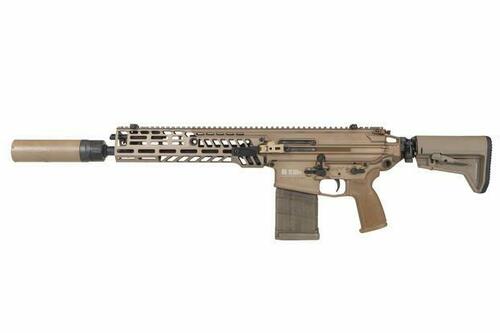M-16 Era Ends: Army's 101st Airborne Division Receives Next-Gen Assault Rifles
Army Futures Command announced last week that troops from the 101st Airborne Division at Fort Campbell, Kentucky, have received the Army's next-generation rifles and light machine guns chambered in a new 6.8mm round. These new weapons are replacing the decades-old M-4 and M-16 battle rifle platforms.
Military Times reports soldiers from 1st Battalion, 506th Infantry Regiment, 101st Airborne Division at Fort Campbell were handed XM7 Next Generation Rifle and XM250 Next Generation Automatic Rifle ahead of training in April.
Produced by firearm maker Sig Sauer, the XM7 is a 6.8×51mm gas-operated, magazine-fed assault rifle that replaces the M-4 carbine for close combat fighting. The XM250 is a 6.8×51mm gas-operated, belt-fed light machine gun that replaces the M249 Squad Automatic Weapon, or SAW. Both rifles are chambered in 6.8×51mm, a new round for the Army that will increase range and improve lethality against the most advanced body armor used on the modern battlefield.
XM7
XM250
The fielding of these two rifles "is a culmination of a comprehensive and rigorous process of design, testing and feedback, all of which were led by soldiers," Col. Jason Bohannon, manager of soldier lethality for the Program Executive Office Soldier project, said in a statement.
Bohannon continued: "As a result, the Army is delivering on its promise to deliver to soldiers the highest-quality, most-capable small-caliber weapons and ammunition."
The latest figures from the Army's fiscal 2025 budget request show a plan to purchase 111,428 XM7 rifles and 13,334 XM250 automatic rifles. The service also wants to purchase 124,749 XM157 Fire Control devices, also known as next-gen optics, which would be standard on battle rifles through 2030.
Both next-gen rifles "ensure increased lethality against a broad spectrum of targets beyond current/legacy weapon capabilities; increased range, accuracy, and probability of hit; reduced engagement time; suppressed flash/sound signature; and improved controllability and mobility," the Army's budget explains.
The new rifles come as the threat of major conflict across the world has never been higher. Conflicts could quickly spiral out of control in Eastern Europe and the Middle East. There is also rising concern about China in the Pacific.



